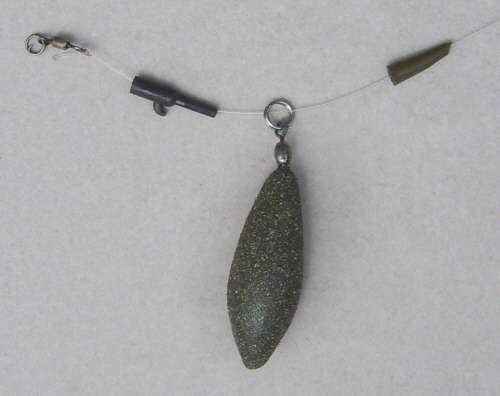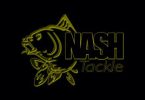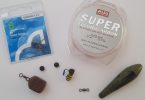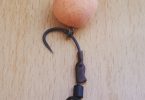
A disturbing aspect offering carp fishing in France on a commercial basis is the numbers of carp each year that end up dragging leaders and leads around the lake because carp anglers use unsafe carp rigs.
A fundamental aspect of carp fishing is the safety of our beloved quarry – the carp. Unfortunately unsafe rigs can lead to carp dying because the tackle used by some anglers does not allow heavy leads to be jettisoned by the carp in the event of the main line breaking. The reasons can be;
- leaders cannot pass freely through the tail rubbers to safety clips
- rubbers are pushed onto clips too tightly
- the wrong tail rubbers to safety clips are used
- tail rubbers are superglued on
- leads are tied to clips because anglers don’t want to lose their leads
- the use of leaders incorporating tungsten putty
Any of these causes can mean that the carp cannot get rid of any of the component parts in the event of the main line breaking… a situation which often leads to death for the carp. And it’s so easy to avoid, often simply cutting the tail rubbers at an angle allows leaders to pass freely through them.
So here’s a step by step guide on how to construct a safe carp rig. Let’s start with the component parts;
Step 1

- Distance lead
- Tail rubber
- Clip with tab retained, but cut back
- Swivel with Q ring
Step 2

- Normal tail rubber
- Tail rubber cut at 45 degrees
Step 3

- Tail rubber intact
- Safety clip intact
Step 4

- Tail rubber cut
- Safety clip cut, but still retaining short tab as shown
Step 5

- Key ring
- Q ring
Step 6

- Distance Lead Type 1
This is a lead often used by carp anglers. This lead and clip set up is designed to allow a lot of movement between the lead and the clip. It also allows the lead to sink into soft silt, effectively increasing the weight of the lead on the take from the fish. This can help you get good hook holds because the extra weight helps pull the hook home.
However, if this set up is fished on bottoms of gravel or thin silt the lead will not sink into the bottom material. In this case the weight of the lead is not getting to the point of the hook quick enough because of the excessive amount of movement between the lead and the clip. This can lead to the carp dropping the bait before the hook is set home.
Result – missed takes!
Step 7

- Distance lead Type 1
- Swivel removed from Type 1 lead
Step 8

- Result is my preferred Distance lead – the Distance Lead Type 2
Step 9

- Distance Lead Type 2
In this set up the clip and lead arrangement minimise free movement – so the weight of the lead is getting to the point of the hook quicker. Because the lead and clip fit snugly together it is acting almost like an in-line lead set-up.
Result – less missed takes!
Step 10

- Q ring connected to swivel
- Swivel threaded onto fluorocarbon leader
- Lead and tail rubber easily pass over leader knot
- Tail rubber easily slides off tab when tab has been cut
Step 11

- Leader threaded through clip and tail rubber
- Lead and key ring slides onto clip
Step 12

Distance lead Type 2 set up complete
- The ring must pass over the stem of the clip and push in behand the tab end. I use a key ring with an internal diameter of 6.4mm
Step 13

- My normal baited hook length, hair tied KD style
- The stiff boom is lead core
Over the course of the season, the carp become aware of this aggressive hook pattern so I use the baited hook length shown in the next photograph.
Step 14

- Boom section – Suffix Shock Leader material
- Leader knot
- Braided hook length
- Size 6 Mugga hook
- Silicone rubber
- Hair tied KD style but flattened to the bend of the hook
A small piece of silicone tubing is inserted over the hair and hook to flatten the hair length to the hook. When the fish mouth the boilie the silicone easily slides up the shank of the hook so that it then reverts back to the aggressive KD pattern. I used this pattern hook length through the whole of the September session when I caught all the big carp.
Step 15

- This is the leader knot used to tie the leader to the main line, be it mono or fluorocarbon
- I also use it for tying the stiff boom section to the supple hook length
Step 16

- Hook bait with dissolvable foam threaded over hook length – ready to fish!
- Two pieces of foam cover the supple section of the boom which prevents the rig from tangling. The foam is sprayed with a retardant spray which slows the dissolve rate. Using a single piece of foam, also sprayed with retardant, may bring a quick take because the bait is presented “on the drop”
Step 17

- On the take the component parts will pull apart, with the lead retained on the leader
Step 18

- I use Petroleum Jelly to bed all my knots down, giving maximum knot strength
- The spray retardant for foam
Step 19

For every carp angler the welfare of the carp is your top priority. This rig is a safe alternative for anglers who want to retain their leads on a crack off or carp snagging situation because the component parts will easily pull apart, even when lead core leaders are used, and the leader will freely pass through the clip.
And just to prove it works here’s a 46lb mirror carp I caught on this rig at Vaux in September 2011.
Here’s wishing you happy (& safe) carping!
CARP FISHING VIDEOS – Over 40 videos on carp fishing tips that work on French waters.
Carp Fishing in France at 35 lakes
Angling Lines – 01773 590077








